 |
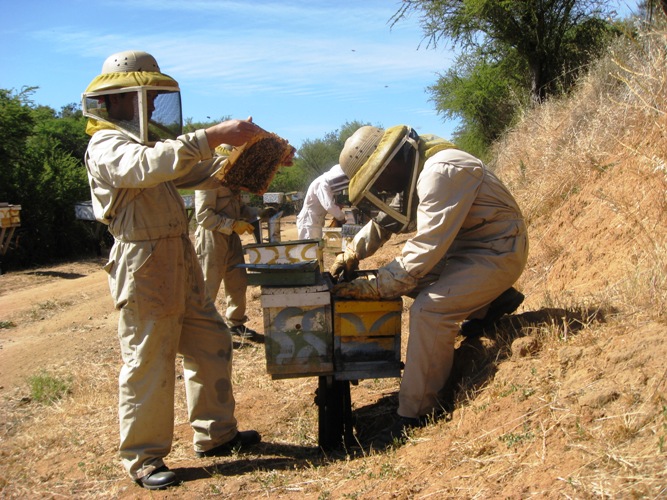 |
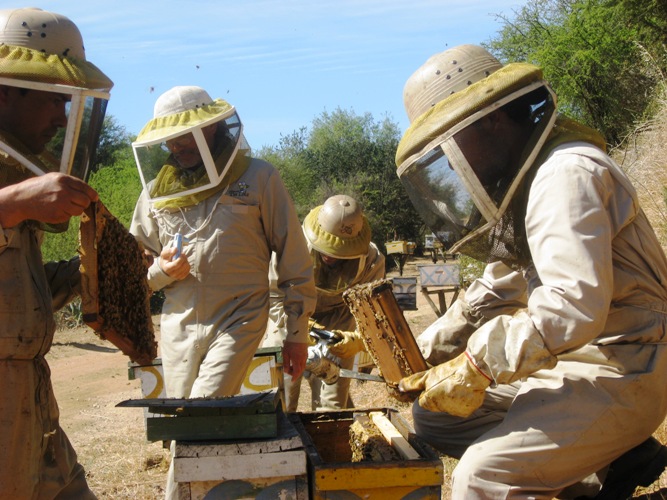 |
 |
 |
 |
 |
 |
Many of us have been less than satisfied with the quality of queens entering Canada. High rates of supercedure, drone layers, and generally listless stock may be the results of disease, poor mating conditions, or generally sloppy breeding practices. Naturally, to protect an investment (and stay in business), a beekeeper must look for better bees. Years ago, it was predicted that Canadian queen producers could meet North American demand for April and May bees. Despite some really good results from some exceptional Canadian bee masters, domestic queen production never covered more than ten percent of commercial demand. As a result, beekeepers have been importing queens but have not been totally satisfied. The search continues.
November 2007 found me in Peru, South America, teaching geophysics for the Canadian International Development Agency. Halfway through my project, I found a break in my work, so I boarded a plane for a long weekend in Chile. Although Peru and Chile are neighbours, the flight from Lima to Santiago was a surprisingly long (4 hour) flight. Culturally and economically, the two countries are a world apart. Peru is developing quickly, but is a poor, third-world country. Guards with guns surround hotels and business visitors are whisked around in fast-moving black cars with dark, bullet-proof windows. The atmosphere in Chile is entirely different.
Chile is California with nicer and fewer people. Roads are quiet and unhurried. Scenery includes the snow-capped Andes and the white-capped surfs of rugged beaches. Chile’s extensive agriculture rivals anything in the world. Tens of thousands of hectares of vineyards, walnuts, avocado, citrus, olives, almonds, apples, kiwis, plums, raspberries, blueberries, peaches, cherries, plus exotics like quince, physalis, carica, and chirimoia fill Chile’s irrigated central valleys. Eucalyptus forests blanket the less arid hillsides. And some lucky beekeepers are in the center of it all.
I met several of these beekeepers, including a recent entomology graduate who might be convinced to search through his acquaintances and coordinate the export of queens. But this seemed a long shot, so I was pleased to meet Francisco Rey Martinez.
Mr Rey is an able beekeeper with about 8000 colonies in avocado pollination and 3000 mating nucs on his 30 hectare ranch. This queen breeder of 25 years experience employs about a dozen assistants, some performing tedious labour, but most of them capable beekeepers grafting and caging queens.
Dr Tom Sanford, now retired from the University of Florida, sites Rey’s Pacific Queen company as “a partnership between France and Chile - Pacific Queens are rigorously selected by the Bond test," which Sanford describes as the “Live or Let Die” system advocated by Francisco Rey’s business partner/geneticist, Dr John Kefuss. Sanford continues, “Kefuss is involved in queen rearing operations in both the Old (France) and New (Chile) World. He was a student of two apicultural research giants, Dr. Walter Rothenbuhler (father of hygienic behavior) and Dr. Fredrich Ruttner of Germany. Dr. Kefuss is bringing his considerable knowledge about queen genetics and breeding to bear on the issue of the day, resistance to Varroa mites… The overriding consideration is selection for certain measurable traits, with the ultimate test being survivability. Thus, Dr. Kefuss says, selection is really nothing more than a process of elimination.”
In my brief encounter with Mr Francisco Rey, I saw evidence of efforts to develop and maintain superior stock, including ample use of drone comb foundation being introduced to selected stock hives. I also saw evidence of careful queen breeding practices that should result in generally superior queens. I liked Francisco’s assurance that queens are caged to meet current shipping deadlines – they are not banked and rarely caged for more than a day or two. Pacific Queens Ltda is less than two hours from the Santiago airport and delivery trips are planned to coincide with flights and thus reduce transit time.
Grafting occurs in a modern, well-lit grafting house and nucs are stable, large units – 4-frame Langstroth deeps. The mating nucs are spread along a 3 kilometre trail on the 30 hectare farm. Individual nucs are randomly oriented and painted with a variety of colourful patterns. These simple basic practices keep acceptance at an average 85 percent over the course of the season. The excellent Chilean climate – very little rainfall and bright, mild summer weather (typical highs are 30 C) obviously also help. In the southern hemisphere, the prevailing currents are from the east, so the climate is drier than California’s and doesn’t suffer from the periodic fogs that sometimes damage mating in areas like the Napa Valley.
Although Pacific Queens is situated on a ridge with easy bee-flight access to two different valleys – with differing ecosystems and somewhat varied flora – it is still necessary to supplement carbohydrates. Hence, supplemental feed is available to the cell builders and mating nucs. Nucs are kept supported on treated stands for ease of caging but also to eliminate tiny ants from hoarding into the boxes. I’m not sure what happens to the elevated nucs during earthquakes. Fortunately, severe seismic activity is rare.
My extremely quick visit to Chile – wedged between other projects in South America – was just a teaser for me. I have no doubt that among Chile’s 450,000 colonies and 1800 beekeepers there are quite a few other interesting apiaries and other capable queen breeders. If there are long-term beekeeping challenges in this rich, progressive country, they might include the possible future arrival of Africanized stock. Although AHB has been found in some of the tropical regions of neighbouring Argentina, it will not be able to cross the Andes, which completely isolate Chile from the rest of South America. Arrival would have to be by ship, as occurred in Florida twenty years after AHB settled in Texas. But this is a long-shot as ports are few; are well-monitored; and, commerce is mostly long-haul with largely North American and trans-Pacific trade partners.
If you are interested in importing queens from Chile this year, there might still be time to make arrangements. 90 day permits are available for a fee from your local CFIA office - mine faxed a ten-page application with instructions to my office. Several Canadian beekeepers will be importing queens from Chile this spring and the CHC has some of their names available for distribution.
But February is a brilliant time to check out Chilean queen breeding for your self. Anyone who would like to contact Mr. Rey directly may call 011-56-9-8255053. More information, including more photos and a video, are available by following the Chile Beekeeping links at www.badbeekeeping.com. You may also reach this author, Ron Miksha, at miksha@shaw.ca.
 |
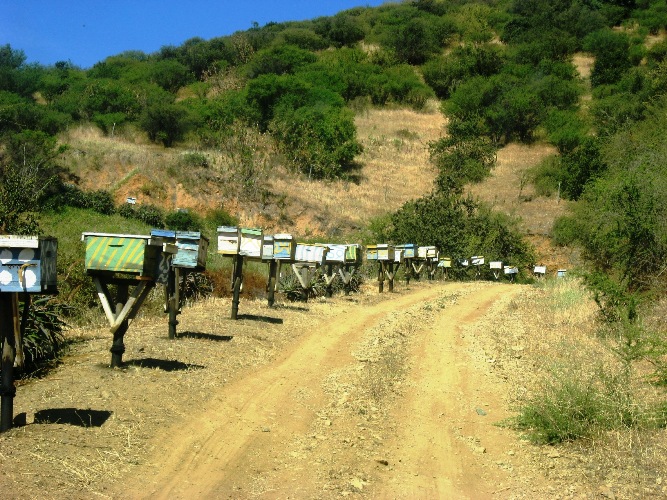 |
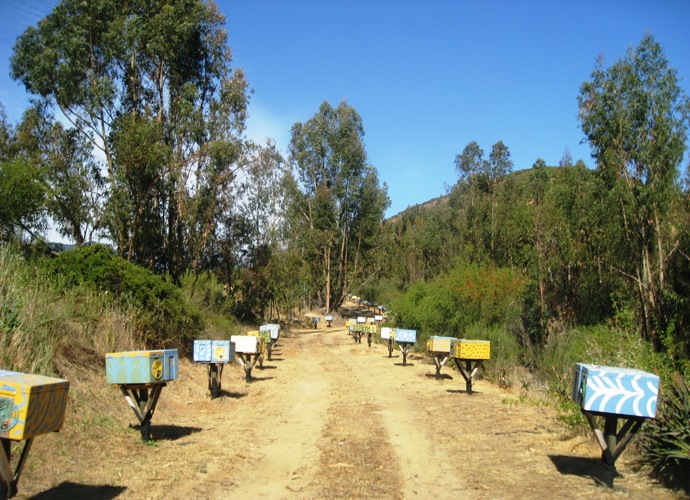 |
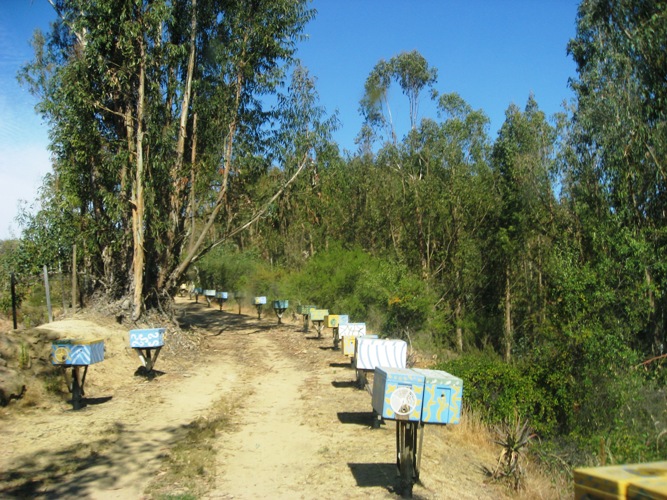 |
Beekeeping: The Beekeeper's Home Pages - (Beekeeping@shaw.ca) - http://www.badbeekeeping.com